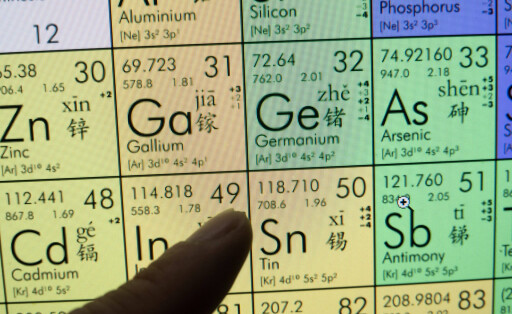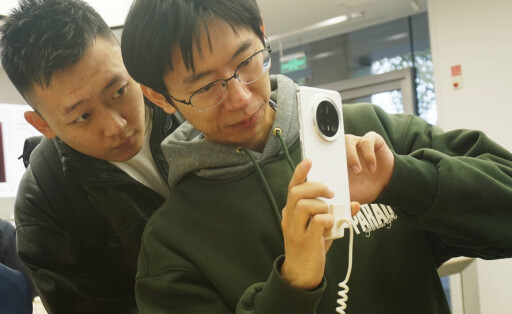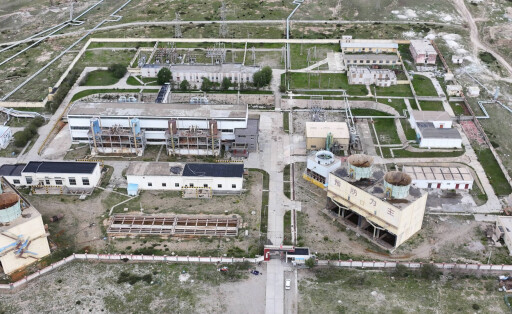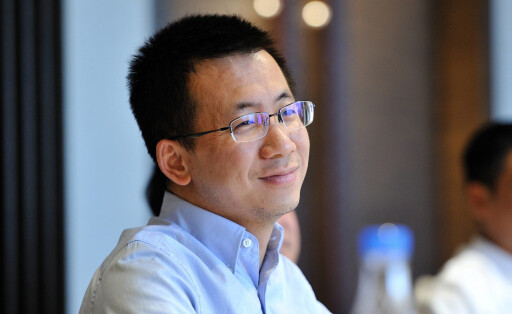
EVs: VW and Xpeng open charging networks for each other's customers
Volkswagen and Xpeng expand their partnership: They expand the EV charging infrastructure in 420 Chinese cities.
By Emily Kossak

Volkswagen and Xpeng expand their partnership: They expand the EV charging infrastructure in 420 Chinese cities.
By Emily Kossak

Beijing is flexing its muscles against the USA with export restrictions like never before. Observers have long warned of Chinese dominance over critical metals.
By Jörn Petring

The Commission awards the contract for the development of a satellite-based communication system. The Spacerise consortium, led by the satellite operators Eutelsat, Hispasat and SES, is to build and operate Iris².
By Corinna Visser

Despite the social media hype, Huawei's new smartphone model has been met with mixed reactions. This is mainly due to the operating system, which is no longer compatible with Android, and the less advanced chips.
By Fabian Peltsch

Chinese cities and companies increasingly rely on geothermal energy to heat households during winter. The technology has enormous growth potential in the People's Republic.
By Redaktion Table

The USA and China dominate the field of artificial intelligence. Germany and Europe can still earn a place among the world's best, says AI entrepreneur Feiyu Xu – if they are willing to set the right course.
By

Chinese engineers and scientists have developed a cable winch system for use in extreme ocean depths. It is designed to lay submarine cables in the Mariana Trench.
By Angela Köckritz

According to a report in the Financial Times, the EU is planning to make China more accountable for access to the European market with stricter regulations for clean technologies.
By

This year's Hurun list of the wealthiest Chinese shows which sectors are particularly hard hit by the crisis. But it also shows which technologies and developments are shaping the world.
By Jörn Petring

Roland Busch, Siemens CEO and Chairman of the Asia-Pacific Committee, believes in India's rise. He believes a direct comparison between China and India is difficult.
By Amelie Richter
China wants to be the global technology leader by 2049 at the latest. In some areas it looks good, in others less so. Table.Media's editorial team has all the news on technology in China.
China has announced ambitious goals. The People's Republic wants to be the global technology and innovation leader by the end of the year at the latest. In some areas it looks good, in others less so. Overall, China still has some catching up to do. In the global listing of the World Intellectual Property Organization (WIPO), China currently ranks twelfth. This means that the People's Republic is not among the top ten most innovative economies. Switzerland, Sweden as well as the USA and Great Britain top the list. In the Asian region, South Korea (fifth place) and Singapore (eighth place) are ahead of China. But there are sub-sectors in which China is already a leader. For example, 40 percent of all patent applications relating to 6G technology come from the People's Republic. This technology is expected to be usable from 2030.
China can only become a technology leader if it transforms its economy. Corresponding steps are also set out in the current Five-year plan. In particular, it lists innovations in the fields of artificial intelligence, quantum technology, information technology, brain research, biotechnology, digitization, and aerospace. Made in China 2025 is another strategy of the Chinese Communist Party. Among other things, it aims to make China the world leader in the fields of telecommunications, robotics, high-end automation and cars with alternative drives. In this way, China wants to get rid of the image of being the "workbench of the world."
The Made in China 2025 plan sets out five initiatives to help China become a global technology leader as quickly as possible. The first initiative is to establish forty new research and development centers by 2025, in which companies, universities and research academies are to work together. Under the second initiative, independent research and development centers are to provide patents for high-end products in the key technologies identified. Initiative three is about reducing CO2 emissions by twenty percent to make production greener and industry greener. Initiative four aims to use smart manufacturing to cut operating costs, production time and failure rates in key industries by half. Initiative five deals with the development of materials and components. China aims to increase self-sufficiency for core materials to 70 percent by 2025.
In the space sector, China has ambitious plans. Like many areas of technology, it has a significant political component. For President Xi Jinping, it is part of China's revival as a world power and technology leader. Space travel is part of the soft power strategy and thus also pursues interests in geopolitics. The Communist Party's plans in this area are correspondingly ambitious. In addition to establishing a base on the far side of the moon and building its own space station, the People's Republic is planning three major missions by 2030 to explore the solar system. Thus, both the asteroid Kamo'oaleva and the comet 311P/PANSTARRS are to be approached. A sample return mission to Mars and exploration of Jupiter are also planned.
China is lagging behind in semiconductor production. The entire Chinese semiconductor industry produces about as much as U.S. supplier AMD. The Chinese economy has become dependent in this area. While China consumes 60 percent of the world's chips, only 16 percent of the units processed actually come from China. This is one reason why semiconductor production is a core part of the "Made in China 2025" strategy. This envisages that China will also produce exactly 70 percent of its chip consumption itself in 2025. However, the sector is miles away from this. On average, growth of around one percent per year is currently expected. This would give China a rate of 19.4 percent in 2025. In 2020, the Communist Party subsidized semiconductor production with a total of 100 billion dollars. Through tax cuts and cheap loans. As a result, a total of 50,000 new companies have been established that work in the field of semiconductor technology. A lot of money has been invested especially in the area of research and development, as China's semiconductor manufacturers are significantly inferior to foreign competitors.
Among the most popular apps in China are Tencent's WeChat applications, which is used to organize almost all aspects of daily life. The program also has a payment function. In second place among the most popular apps is the instant messenger QQ, which is also from Tencent. Third place among the most popular apps goes to Alipay from the online shopping company Alibaba. But the Communist Party has its sights set on the tech giants. The private companies are becoming too powerful for them, which is why there is repeated state intervention. For example, the app from Didi, the Chinese Uber, had to be removed from all app stores. The reason for this was the company's IPO in the U.S. and concerns that the U.S. could intercept user data. The job platform Boss Zhipin and the truck booking app of the Full Truck Alliance are also under investigation.
In China, the spread of the 5G mobile communications standard is a high priority. The country is correspondingly advanced in this area. By mid-2021, the People's Republic had already invested 40 billion US dollars in this technology. This has enabled 718,000 5G base stations to be set up. That is more than in all other countries in the world combined. 87 percent of all 5G connections come from China. However, Chinese companies have a problem. They are not allowed to participate in the expansion of 5G technology in the USA. The hurdles are also too high in Europe. That's why China is cooperating with Russia. The Chinese mobile communications equipment supplier and cell phone producer Huawei is working with the Russian company MTS to expand the 5G network in Russia.
The Communist Party's approach to artificial intelligence is ambivalent. On the one hand, the regime relies heavily on this technology when it comes to monitoring its own population. It is also trying to advance this technology as quickly as possible in the areas of industry and mobility. On the other hand, the government in Beijing has passed a strict law regulating artificial intelligence from private companies. This is intended to protect citizens from manipulative algorithms. For example, companies must disclose when they use an algorithm to promote content or products. It must be possible to switch off this algorithm. Furthermore, users must be able to retrieve what a provider knows about them in the future. In addition, the algorithms must be programmed in such a way that the suggestions are not click-addictive.
Digitization is one of the most important research and economic sectors of the future in China. Ken Hu, the CEO of Huawei, predicts that as early as 2025, around 55 percent of China's national product will be generated by the digital economy. The Communist Party is also responding in the area of finance. It is currently testing Digital Currency Electronic Payment (DCEP) - also known as E-Yuan. It's a digital currency based on blockchain. It's a thorn in the government's side that more and more Chinese are using Tencent and Alibaba's payment app. The government has no insight into this data. The e-yuan is supposed to change that.
China is the largest market for robotics. The corona pandemic has cemented this status. In 2020, 169,000 new robots were installed in the People's Republic - a 17.4 percent increase. There has been an increasing use of robots, especially in hospitals, hotels and restaurants, to reduce the risk of infection, he said. In industry, automated operations have been considered particularly crisis-resistant since the corona pandemic. In China, there are about 187 robots for every 10,000 employees. The global average is around 117, and in Germany it is 350 robots per 10,000 employees. The front-runner is South Korea with 850. The crisis has led to investments in this area being brought forward and expanded. Robotics is also part of the Made in China 2025 strategy, and the government in Beijing is providing correspondingly lavish subsidies for suitable projects.
The smart home sector is growing massively in China. In 2021, around 230 million devices will be shipped in the People's Republic. This corresponds to growth of 14.6 percent. The number is expected to grow to 540 million devices in 2025, according to global market research firm International Data Corporation (IDC). The average growth rate of 21.4 percent is due on the one hand to the early development stage and the low market penetration of this technology. On the other hand, it is due to the fact that smart homes and the Internet of Things are a future technology.
The Chinese technology sector could fundamentally change economies around the world. The impact of innovation in this sector cannot be overstated. Table.Media's editorial team provides all the news in German on technologies from the People's Republic.